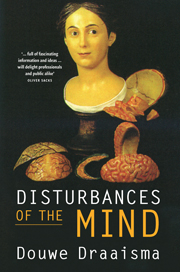Book contents
- Frontmatter
- Contents
- Introduction
- 1 Towards dusk the images appear
- 2 A tormenting round of tremors
- 3 Phineas Gage’s posthumous stroll
- 4 The Celestine prophesy
- 5 Sparks from a Leyden jar
- 6 Siberian brandy
- 7 Go to hell, idiot! Gilles de la Tourette syndrome
- 8 A labyrinth of tangles
- 9 The Mercator of neurology
- 10 The headquarters of madness
- 11 A cup of tea for the doppelgänger
- 12 Little professors
- 13 The Cardan suspension of science
- Index
- References
1 - Towards dusk the images appear
Bonnet syndrome
Published online by Cambridge University Press: 05 March 2014
- Frontmatter
- Contents
- Introduction
- 1 Towards dusk the images appear
- 2 A tormenting round of tremors
- 3 Phineas Gage’s posthumous stroll
- 4 The Celestine prophesy
- 5 Sparks from a Leyden jar
- 6 Siberian brandy
- 7 Go to hell, idiot! Gilles de la Tourette syndrome
- 8 A labyrinth of tangles
- 9 The Mercator of neurology
- 10 The headquarters of madness
- 11 A cup of tea for the doppelgänger
- 12 Little professors
- 13 The Cardan suspension of science
- Index
- References
Summary
In the spring of 1759, in Geneva, the retired magistrate Charles Lullin called in his secretary for a long session of dictation. He was advanced in years (close to 90) and his eyes were beginning to fail. In October 1753, he dictated, he had undergone a cataract operation on his left eye; until September 1756, he had been able to see with the help of a convex lens, but now the light had gone completely. The right eye had also been operated on for cataracts and there was some light left, although not enough to enable him to read or to write. Since then he had had a servant read the newspaper to him. Lullin was convinced that the curious experiences which he was about to record were related to his eye problems.
In February 1758, strange objects had begun to float into his field of vision. It started with something that resembled a blue handkerchief, with a small yellow circle in each corner, about the size of a fives ball. The handkerchief followed the movement of his eyes: whether he was looking at a wall, his bed or a tapestry, the handkerchief blocked out all the ordinary objects in his room. Lullin was perfectly lucid and at no time did he believe that there really was a blue handkerchief floating around. Nor was it difficult to make the image disappear: all he had to do was move his eyes to the right, and he again saw the familiar objects in his room. The handkerchief was not the only object he saw. One day in August, two granddaughters came by. Lullin was sitting in his armchair opposite the mantelpiece, and his visitors were to his right. From the left, two young men appeared. They were wearing magnificent cloaks, red and grey, and their hats were trimmed with silver. ‘What handsome gentlemen you’ve brought with you! Why didn’t you tell me they were coming?’ But the young ladies swore that they saw no one. Like the handkerchief, the images of the two men dissolved within a few moments.
- Type
- Chapter
- Information
- Disturbances of the Mind , pp. 11 - 39Publisher: Cambridge University PressPrint publication year: 2009



